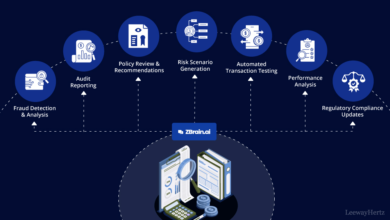
Facial Recognition Technology: Shaping the Future of Identification
Modern society no longer needs science fiction to understand facial recognition technology. The tool exists today as a fast-evolving technology which serves multiple American industrial sectors. The technology powers multiple systems that now verify and authenticate identities through facial attributes as a main authentication method.
What Is Facial Recognition Technology?
The technology which measures facial features to identify people is classified as facial recognition biometric authentication. The system requires sophisticated computational algorithms to study patterns that develop from facial structures.
How It Works
The recognition system starts by taking a visual frame either as an image or video. AI facial recognition technology performs a facial outline and establishes measurements of facial features including nose to eyes and jaw to other essential characteristics. These measurements create a unique identification marker which allows systems to compare it to stored databases for verification purposes.
Applications of Face Recognition Technology in the U.S.
Face recognition technology has become a common practice throughout American public and private domains. The technology finds its main applications in these notable fields:
Law Enforcement and Public Safety
A majority of adult Americans (over 50%) currently exist in police-used facial recognition databases. The biometric facial recognition system enables real-time identification of missing people as well as suspect location and continuous criminal activity observation.
Transportation and Airports
Facial recognition technology operated by the U.S. Customs and Border Protection agency exists at more than 200 entry points. Through this technology both immigration process acceleration and increased national security benefits are delivered.
Retail and Banking
Artificial intelligence facial recognition technology enables banks along with retail sectors to stop fraudulent activities while verifying their customers and improving their tailored marketing strategies. Biometric security received endorsement from 62% of U.S. banks through their planned investment increases according to a 2023 survey.
Benefits and Challenges of Biometric Facial Recognition Technology
Advantages
Users experience faster identification checks in multiple settings that include phone security and airport entry systems.
Security: Reduces the risk of identity theft and fraud.
The capability of performing contactless authentication makes this technology highly convenient for post-pandemic scenarios.
Concerns
The technology provides benefits but simultaneously creates legal and ethical problems because of its implementation.
Numerous Americans maintain concerns about how their private information may be both monitored persistently and exploited improperly.
Multiple research studies including NIST have verified that some facial recognition systems produce more errors when analyzing people of color.
The use of facial recognition technology remains unregulated in most American states except Illinois and California.
Trends and Future Outlook in the U.S.
The evolution of facial recognition technology depends on the combination of artificial intelligence with machine learning systems. According to market forecasts the U.S. facial recognition market will expand past $11 billion by 2030 starting from its current value of $5.1 billion in 2023.
Legislative Developments
American legislators are implementing extensive federal policies after facing greater public oversight. The Facial Recognition and Biometric Technology Moratorium Act puts restrictions on government facial recognition and biometric technology deployment because it wants enhanced oversightDirection.
Technological Advancements
Modern AI facial recognition systems prove their ability to track people instantly and identify emotions while performing facial recognition through masks or partial facial coverings. The new advancements strengthen accuracy levels and resolve particular privacy issues.
The Role of Public Perception
The Pew Research Center revealed in 2024 that Americans approved of security-based facial recognition (56%) yet they opposed retail-based facial recognition (27%). Such public polarization demonstrates that clear policy guidelines and public discourse matter for effective usage.
Read Also: Importance of Protective Packaging Materials in Modern Logistics
Conclusion: The Evolving Landscape of Facial Recognition
The American population experiences major changes in their relations with institutions and technology through the adoption of facial recognition technology. Modern facial recognition systems will inevitably spread throughout daily life because they demonstrate increasing accuracy in their identifications. A sustainable integration of this technology requires protecting privacy rights alongside fairness measures while carrying out effective oversight.
The wide potential benefits of face recognition are reachable only through ethical implementation combined with public trust measures. The path of artificial intelligence facial recognition technology within the United States is still unfolding as society determines its destiny.



